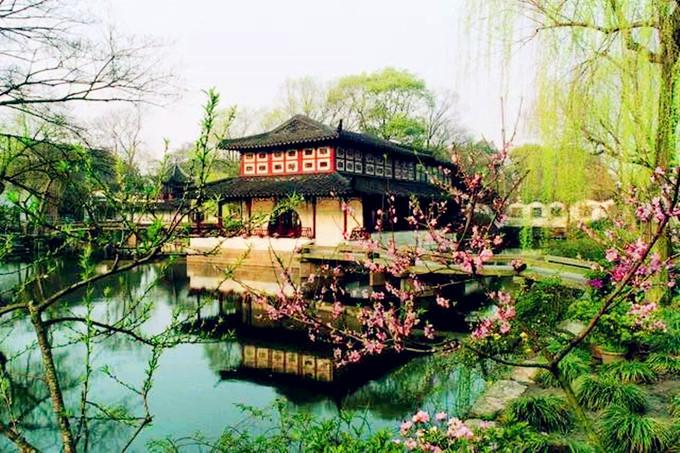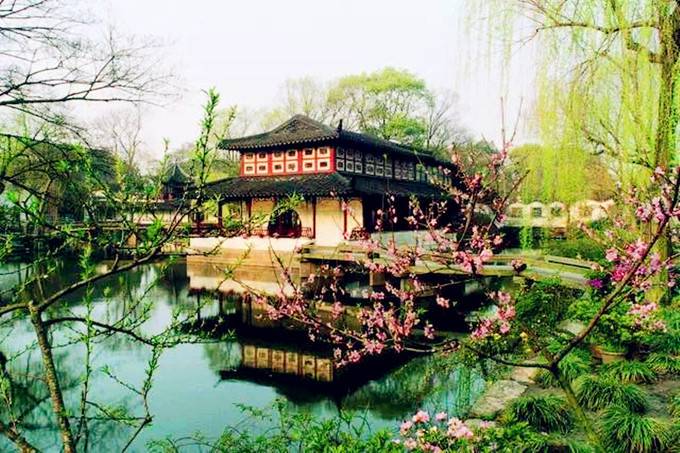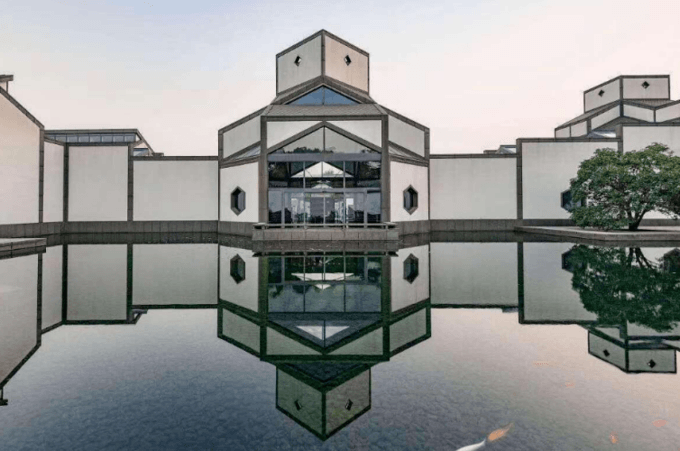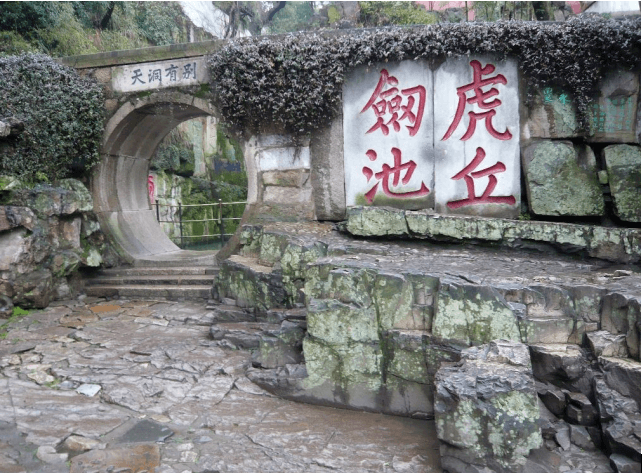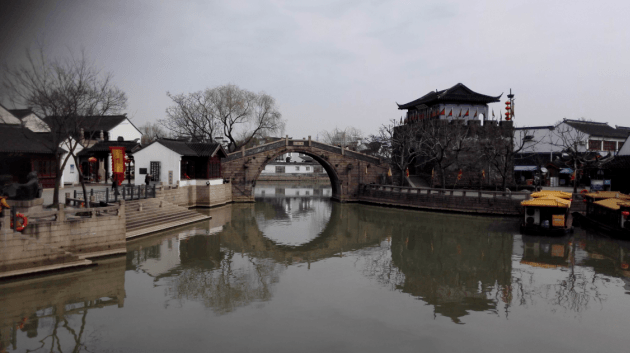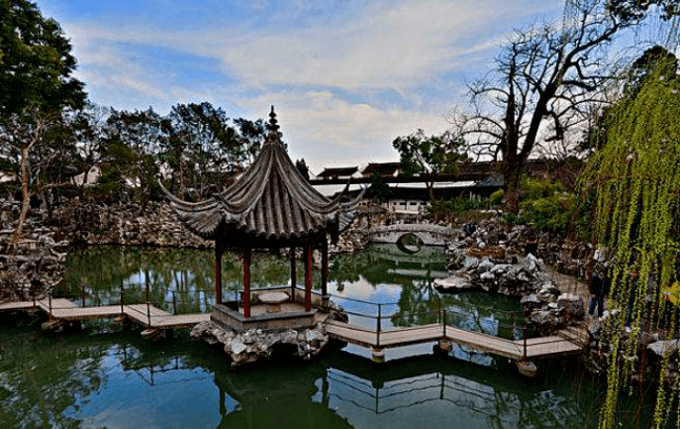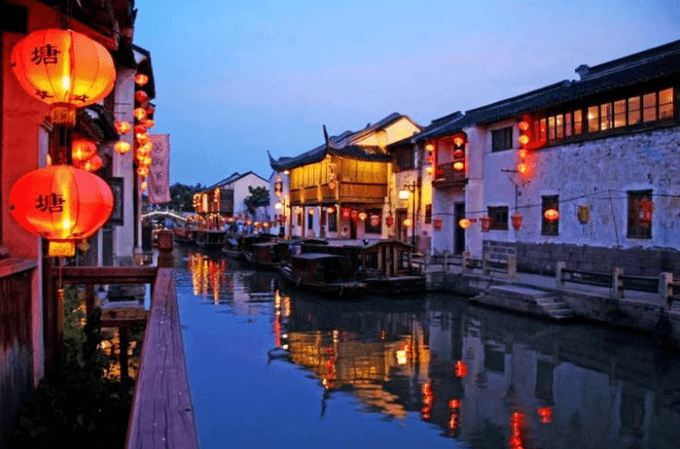Zhuozheng Garden is the largest existing classical garden in Suzhou. It was first built in the early Ming Zhengde period (1600), with a history of over 500 years. It is one of the four famous gardens in Jiangnan. The entire garden centers around water, with mountains and water complementing each other. The pavilions and towers are exquisite, the flowers and trees are lush, and the garden is full of poetic and picturesque charm, embodying the characteristics of the Jiangnan water town. In 1997, Zhuozheng Garden was approved as a World Heritage Site by UNESCO. It is worth noting that the Suzhou Garden Museum, the only garden-themed museum in China, is located on the southern side of the garden.
Suzhou Museum is also one of the must-visit places. Its designer is the famous architectural master I.M. Pei. The museum's collections mainly include ancient paintings and calligraphy, ceramics, crafts, and unearthed cultural relics. There are four regular exhibitions: 'Treasures of Wu', 'National Treasures of Wu Tower', 'Elegance of Wu', and 'Wu School Paintings and Calligraphy'.
Huqiu Subdistrict
Huqiu, known as the 'Number One Scenic Spot in Wuzhong', has a long history and picturesque scenery. The ancients once described Huqiu with 'Nine Pleasures', which are: pleasure in the moon, pleasure in the snow, pleasure in the rain, pleasure in the mist, pleasure in the spring dawn, pleasure in the summer, pleasure in the autumn coolness, pleasure in the falling leaves, and pleasure in the sunset. Therefore, when you visit Suzhou, you must take a trip to Huqiu.
Fengqiao Scenic Area
Fengqiao Scenic Area is a provincial-level scenic spot with the 'Five Ancients' as its main attractions: Hanshan Ancient Temple, Jiangfeng Ancient Bridge, Tieling Ancient Pass, Fengqiao Ancient Town, and the Ancient Canal. It is said that every New Year's Eve or New Year's Day night, Hanshan Temple holds a bell-ringing ceremony, where the bell is struck 108 times. Each strike represents a worry, and after listening to the bell, the worries of the coming year will be blown away by the wind.
Lion Grove Garden, one of the four famous gardens in Suzhou, is known as the 'Kingdom of Rockeries'. The garden features serene caves and intricate layouts with delicate architecture. It is divided into three parts: ancestral hall, residential quarters, and courtyard. The garden is filled with towering peaks, winding corridors, and secluded paths. Here, you can admire labyrinth-like rockeries, intricately crafted flower walls with lattice windows, and rock formations resembling lions. Notably, the beauty of Lion Grove Garden captivated Emperor Qianlong, who ordered the construction of two replicas in the Old Summer Palace in Beijing for use during his summer retreats in Chengde.
The street is approximately 3600 meters long, about 7 li, hence the name 'From Qili Tang to Tiger Hill'. During the Tang Dynasty, Bai Juyi served as the governor of Suzhou. During the dredging of the river, the Shantang River was excavated and built along the river, also known as 'Shantang Street'. Strolling along Shantang Street, you can admire the ancient buildings on the street. Most of these buildings date back to the late Qing Dynasty and the Republic of China period, consisting of several building groups that intersect horizontally and vertically. Notably, Qili Shantang was once one of the most prosperous commercial and cultural streets during the Ming and Qing Dynasties in China, known as the 'Ancient Street of China', 'a microcosm of old Suzhou, and a window to Wu culture'.
